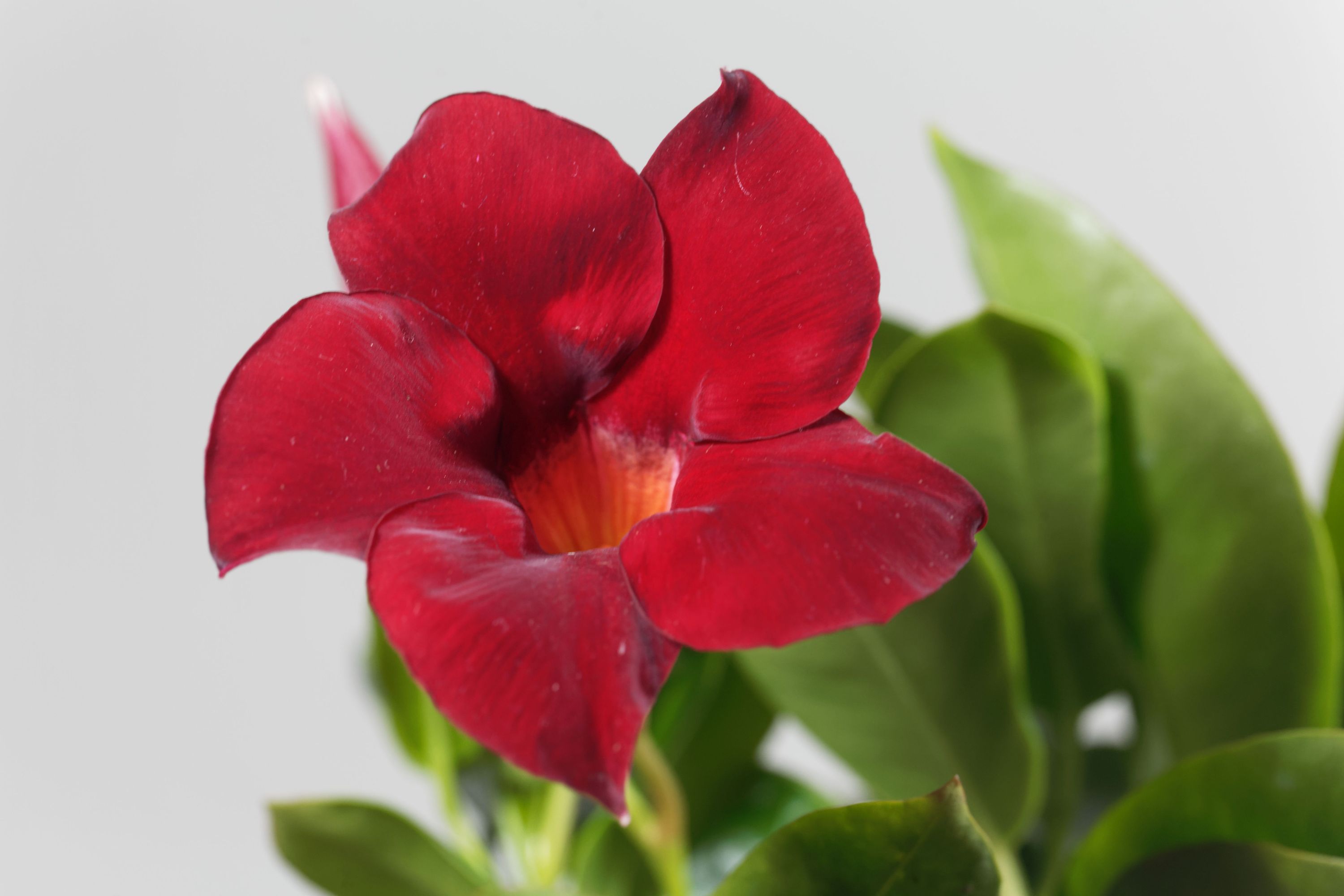Brazilian jasmine
(Mandevilla sanderi)

Description
Mandevilla sanderi, commonly known as Brazilian jasmine or Dipladenia, is a stunning flowering plant belonging to the family Apocynaceae. Native to Brazil, this tropical beauty is a popular choice for gardeners and plant enthusiasts worldwide due to its gorgeous, trumpet-shaped blooms and evergreen foliage. Taxonomy and Nomenclature Mandevilla sanderi was first described by the Belgian botanist Émile Auguste Joseph De Wildeman in 1901. The plant is named in honor of Henry Mandeville, an English diplomat and avid plant collector. The specific epithet "sanderi" refers to the British horticulturist and nurseryman, Henry Frederick Conrad Sander, who played a significant role in popularizing the plant in Europe. Description Mandevilla sanderi is a woody, evergreen climber that can grow up to 6 feet tall and 3 feet wide. The plant has shiny, dark green, ovate leaves that are about 2-4 inches long and 1-2 inches wide. The foliage is leathery and glossy, adding to the plant's overall attractiveness. The showy, trumpet-shaped flowers of Mandevilla sanderi are the plant's main attraction. The blooms are usually pink, but they can also be red, white, or a combination of these colors. They are 2-3 inches wide and have five petals that are slightly wavy along the edges. The flowers bloom in clusters and are fragrant, making them attractive to pollinators like bees, butterflies, and hummingbirds. Cultivation and Care Mandevilla sanderi is a tropical plant that thrives in warm, humid conditions. The plant requires full sun to partial shade and well-draining soil. In its native habitat, it grows in the understory of rainforests, which means that it prefers to be protected from direct sunlight during the hottest part of the day. The plant should be watered regularly but not overwatered. It is essential to allow the soil to dry out slightly between watering to prevent root rot. In winter, when the plant goes dormant, it requires less water. Mandevilla sanderi is a vigorous climber and needs support to grow. It can be trained to grow up a trellis, fence, or arbor. The plant responds well to pruning and should be trimmed in spring to maintain its shape and promote new growth. Propagation Mandevilla sanderi can be propagated through stem cuttings or by layering. The best time to take cuttings is in spring or summer when the plant is actively growing. Cut a stem that is about 4-6 inches long and remove the lower leaves. Dip the cut end in rooting hormone and plant it in well-draining soil. Keep the soil moist and place the cutting in a warm, bright location. To propagate by layering, bend a healthy stem down to the ground and cover a section of it with soil. Keep the soil moist, and in a few months, roots will develop from the buried section of the stem. Once the new plant is established, it can be separated from the parent plant and potted up. Uses Mandevilla sanderi is a popular ornamental plant that is used in gardens, landscapes, and containers. The plant's stunning blooms and glossy foliage make it an excellent choice for adding color and texture to any space. The plant is often used to cover trellises, arches, and walls, creating a stunning vertical display. The plant is also used in traditional medicine in some parts of the world. The leaves and roots of the plant are said to have antiseptic and anti-inflammatory properties and are used to treat various ailments such as cough, fever, and wounds. Potential Issues Mandevilla sanderi is relatively pest and disease-resistant but can be affected by mealybugs, spider mites, and scale insects. These pests can be treated with insecticidal soap or neem oil. The plant is also susceptible to root rot if overwatered or planted in poorly-draining soil. Conservation Status The conservation status of Mandevilla sanderi has not been assessed by the International Union for Conservation of Nature (IUCN) Red List. However, as a widely cultivated ornamental plant, it is not currently considered to be at risk of extinction in the wild. Nonetheless, it is always important to practice responsible and sustainable cultivation practices to preserve the biodiversity of natural habitats where plants like Mandevilla sanderi originate from. Conclusion Mandevilla sanderi is a stunning flowering plant that is prized for its beautiful blooms and evergreen foliage. The plant is relatively easy to care for and can be propagated through stem cuttings or layering. It is a popular choice for gardens, landscapes, and containers, adding color and texture to any space. Its traditional medicinal uses also make it a valuable plant. Overall, Mandevilla sanderi is a must-have for any plant lover looking to add a touch of tropical beauty to their collection.
Taxonomic tree:







